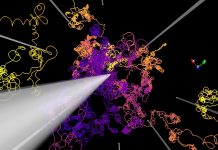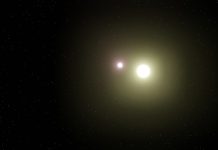In 1991, the Fly’s Eye experiment at the University of Utah made a groundbreaking discovery by detecting the highest-energy cosmic ray ever recorded
This particle, later named the Oh-My-God particle, shocked astrophysicists due to its energy surpassing anything producible within our galaxy.
Telescope array
Its energy level exceeded the theoretical limits for cosmic rays originating from distant galaxies and arriving at Earth. Essentially, the existence of such a particle defied conventional understanding.
The Telescope Array has identified over 30 ultra-high-energy cosmic rays, albeit none reaching the extraordinary energy level of the Oh-My-God particle. The origin and mechanisms enabling these particles to traverse vast distances to reach Earth remain elusive, posing an intriguing mystery in astrophysics.
On May 27, 2021, the Telescope Array experiment detected the second-highest extreme-energy cosmic ray at 2.4 x 10^20eV. To put it in perspective, the energy of this single subatomic particle is equivalent to dropping a brick on your toe from waist height.
The Telescope Array, led by the University of Utah and the University of Tokyo, comprises 507 surface detector stations arranged in a 700 km² grid outside Delta, Utah. The event triggered 23 detectors in the northwest region, covering 48 km². The ray’s direction seemed to come from the Local Void, a space near the Milky Way galaxy.
The Amaterasu particle
Published on Nov. 24, 2023, an international team of researchers in the journal science detailed their observation of the ultra-high-energy cosmic ray. They evaluated its characteristics and suggested that this rare phenomenon may involve particle physics unknown to science.
They named it the Amaterasu particle, inspired by the sun goddess in Japanese mythology. The study confirms the reality of ultra-high-energy events, with the Oh-My-God and Amaterasu particles detected using distinct observation methods.
Cosmic rays serve as remnants from intense cosmic occurrences that have disassembled matter into its subatomic components and propelled it through the universe at almost the speed of light. These charged particles, encompassing positive protons, negative electrons, or complete atomic nuclei, journey through space and consistently shower down onto Earth.
Cosmic rays
Cosmic rays impact Earth’s upper atmosphere, breaking oxygen and nitrogen nuclei apart and creating numerous secondary particles. These particles repeat the process, forming a shower that scatters to the surface. Detecting this massive footprint requires large-area instruments like the Telescope Array.
These detectors provide details about each cosmic ray, with signal timing indicating trajectory and the number of charged particles revealing the primary particle’s energy.
Due to their charge, cosmic rays zigzag through electromagnetic fields, resembling a ball in a pinball machine against the cosmic microwave background. Tracing the trajectory of most cosmic rays, especially low- to mid-energy ones, is challenging. Even high-energy cosmic rays are affected by the microwave background.
With extraordinary energy, the Oh-My-God and Amaterasu particles travel through intergalactic space with minimal bending, indicating they result from the most powerful celestial events.
Ultra-high cosmic rays
Ultra-high-energy cosmic rays must surpass 5 x 10^19 eV, equivalent to the kinetic energy of a major league pitcher’s fastball and tens of millions of times more powerful than any human-made particle accelerator. Astrophysicists established the Greisen-Zatsepin-Kuzmin (GZK) cutoff as the theoretical limit for a proton’s energy over long distances before interactions with microwave background radiation deplete it.
Known sources, like active galactic nuclei or black holes emitting particle jets, are typically over 160 million light years away. The new particle’s 2.4 x 10^20 eV and the Oh-My-God particle’s 3.2 x 10^20 eV easily surpass this cutoff.
Researchers study the composition of cosmic rays to unravel their origins. Heavier particles, such as iron nuclei, are more massive, carry more charge, and are more prone to bending in magnetic fields compared to lighter particles like protons from hydrogen atoms.
According to particle physics, a cosmic ray with energy surpassing the GZK cutoff is too potent for the microwave background to alter its path. However, tracing its trajectory leads to space.
The telescope array’s mission
The Telescope Array, positioned at about 1,200 m (4,000 ft) in Utah’s West Desert, holds a unique vantage point for detecting ultra-high-energy cosmic rays. This altitude allows secondary particles to develop maximally before decay. The location offers ideal atmospheric conditions, with dry air crucial for UV light detection (humidity can interfere) and dark skies essential to avoid light pollution, which can obscure cosmic rays.
Astrophysicists are expanding the Telescope Array to unravel these phenomena despite ongoing mysteries. The expansion includes 500 new scintillator detectors, covering 2,900 km² (1,100 mi²), similar in size to Rhode Island. This broader scope aims to capture more cosmic-ray-induced events, providing valuable insights into these enigmatic occurrences.
Editor's Recommended Articles
-
Must Read >> Illuminating cosmological signposts with cosmic rays














